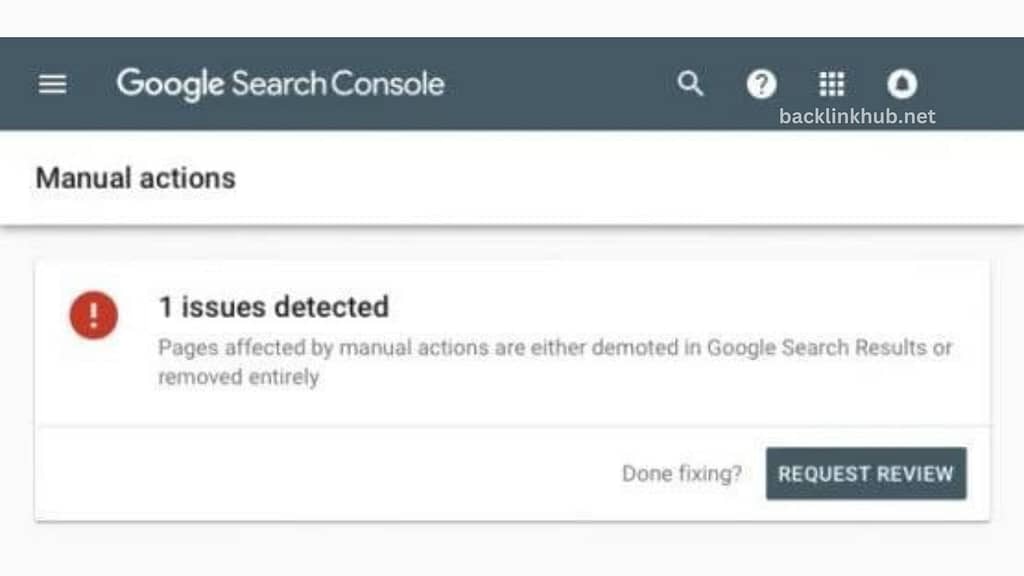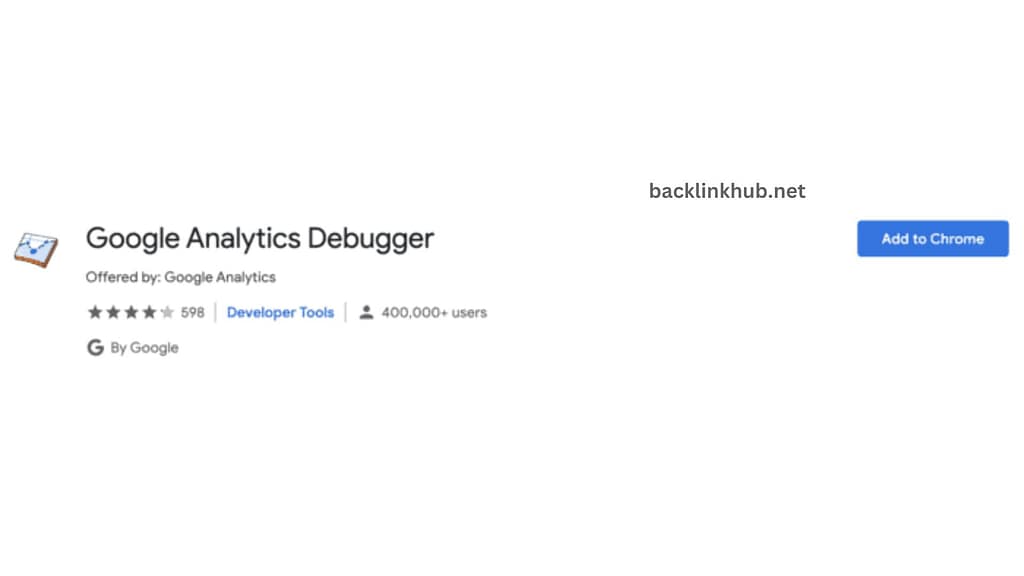Sure! Here’s a more conversational and simpler version:
“Got a penalty from Google?
You’re not alone.
Google gives out over 400,000 manual penalties each month. And that’s not counting the penalties from core algorithm updates.
But here’s the good news:
You can recover from a Google penalty.
However, it’s not easy and requires commitment. You need to follow the right steps to get the results you want.
In this blog post, I’ll share my four-step plan to help you recover from any Google penalty.
Let’s get started.”
Identify What Penalty Hit Your Site Before To Make Any Changes
“The first step to recovering from a Google penalty is figuring out what type of penalty you have.
There are two kinds of Google penalties:
- Manual
- Algorithmic
What you need to do depends on the type of penalty. Each one requires a different approach or a combination of methods to fix.”
1. Were You Hit By A Manual Penalty?
Employees of Google’s webspam or search quality teams impose manual fines. After looking over your website, they decide to manually take down your company’s website.

Typically, manual punishments originate from:
- Unnatural links to or from your website
- Spammy content or pages
- Manipulative structured markup
- Cloaked images and redirects
Google will notify you through Google Search Console if you have been subject to a manual Google penalty.
2. Were You Hit By An Algorithmic Penalty?
IIn case you didn’t know, Google search is powered by an algorithm.
This algorithm uses complex math formulas to decide which results to show users.
Algorithmic penalties are triggered by the Google search algorithm, not by a person. There are usually two types of algorithmic penalties to watch out for:
- Google Panda penalty
- Google Penguin penalty

Since it started in 2011, Google Panda has become a big part of Google’s core algorithm. Its main goal is to fix content-related issues.
This includes pages with very little content or too many ads compared to the content.
Google Penguin, introduced in 2012, caused serious problems for hundreds of websites. Its main goal is to target sites that use shady links to boost their rankings.
That’s why you should always create high-quality links or work with reliable link-building companies that focus on quality.

How To Recover From A Google Penalty Step By Step
Do you believe that Google has penalized you?
Just adhere to my detailed procedure for recovering from Google penalties. Using this exact technique with our own clients, I have successfully aided in the swift recovery of numerous enterprises.
The method is as follows.
Step 1: Examine Potential Ranking Issues
Prior to taking any action, you must comprehend what is going on.
You won’t succeed if you keep poking around in the dark looking for the “right fix.”
To start, look for any possible ranking concerns in these sources.
Google Analytics Check
Make sure your analytics tracking code is installed correctly by visiting Google Analytics first.
You’d be shocked at how frequently this is the issue.

Make sure everything is in order by using the Google Analytics Debugger addon.
Manual Penalty Review
To find out if your website has been subject to a manual penalty, visit Google Search Console. Select “Manual Actions” after selecting “Security & Manual Actions.”
Check this area for any error messages now.

Have you verified that a manual activity is causing the issue?
Make arrangements with an expert SEO agency to handle it. Solving manual penalties might be challenging.
Google Search Console Error Check
Look for any issues that Google Search Console may be reporting.
After selecting “Indexing,” click “Pages.”

Any coverage problems will be indicated here by the Google search console.
Finally, you should review your online experience.
After selecting “Experience,” look over each of the reports listed below:
- Page experience
- Core web vitals
- HTTPS

Don’t worry if you discover any problems.
Simply address each one and send in the corrected versions for verification. Any significant mistakes that result in penalties ought to be noted in Google Search Console.
Recent Site Changes
Still having trouble finding the issue?
Check with every team member or developer to see if there have been any major changes to the site in the past three months.
You might be surprised by some of the changes and how they affect your site.
Important: If you find errors, don’t panic.
When you’re stressed, you might make quick decisions based on feelings. Instead, make decisions based on data. Just keep going with the rest of the process.
Also Read: Finding and Monitoring Backlinks in Google
Step 2: Look Into Recent Algorithm Updates
Google often updates its algorithm.
These changes can sometimes lead to a drop in traffic and site performance, and occasionally, you might even get a penalty.
So, it’s important to:
- Stay updated on Google algorithm changes
- Act quickly if needed
Moz has a great page that tracks all Google updates in real-time. Check it out to see if any updates match the time your site’s performance started to drop.

Found a connection?
Check who the update was aimed at and adjust your website accordingly.
There are plenty of tools available that can help you figure out which updates have impacted your site the most and why.
Try using a Google penalty checker tool to dive deeper into updates and find solutions.
Step 3: Run A Complete SEO Audit On Your Site
It’s time to examine your own website and find any problems.
To be completed are two audits:
- SEO audit
- Content audit
By doing this, you can be sure that you find any problems that would have led to a Google penalty.
1. Complete An SEO Audit
Every six to twelve months, you should perform a thorough SEO assessment on your website.

Here’s the deal:
Doing a full technical SEO audit is tough if you don’t have a lot of SEO knowledge. It really requires the expertise of professional SEOs.
If you’re unsure, it’s a good idea to get help from a trusted organization.
Ready to do your own SEO audit? Follow these five steps:
- Listen to your visitors – Run a survey to get feedback from your users.
- Spot issues yourself – Check your website manually to see where the user experience can be improved.
- Do a quick technical check – Perform a basic technical SEO assessment to find any issues that need fixing.
- Use an SEO audit tool – Run a site scan with a good SEO tool.
- Make a plan – With all the information you’ve gathered, create a plan to make the necessary changes.
2. Complete A Content Audit
The online persona of your company is its content.
While poor material might harm your reputation, good content will support the expansion of your company. A content audit identifies problems with material for:
- Quality
- Relevancy
To be sure that your content is promoting the growth of your website and business, both are crucial.
Surfer SEO is what I use for content audits.

A SERP analyzer offered by Surfer SEO will:
- Analyse each URL
- Audit your content
- Make suggestions for improvement
Really nice, huh?
The hard work is all done by Surfer SEO. All you need to do is adhere to the suggestions.
See my Surfer SEO review for guidance on conducting a thorough content assessment.
Step 4. Clean Up Your Backlink Profile
Tightening up your link profile is essential if you need to bounce back from a Google penalty.
Here’s how to handle it on your own.
1. Find And Identify All Your Bad Links
To identify and eliminate harmful backlinks, you must perform a backlink audit.
There are two instruments needed for this task:
- Google Search Console
- Moz
A list of all the domains that link to you can be found in the Google search console. After logging in, select “Links” from the left sidebar of your GSC account.

Select “Export External Links.”
Not every hyperlink to your website will be listed in full by Google Search Console. To ensure that you have them all, you should cross-reference using a different SEO tool.
For more backlinks, use the Moz Open Site Explorer tool. You must first register for a free account before adding your domain.

Export the link list that Moz has discovered now. There should now be two lists of backlinks for you.
Assessing each link and identifying the problematic ones is the last task. You’ll need to utilize the appropriate tool for this.

Enter Monitor Backlinks and upload both of your backlink lists.

Along with the lists you recently supplied, Monitor Backlinks leverages Ahrefs API and Google Analytics to locate additional links, so you won’t miss a single one.
To be ready to eliminate the problematic links, use Monitor Backlinks to assess each link.
Use my how to remove poor backlinks guide if you need additional assistance identifying and eliminating harmful backlinks.
2. Request Removal Of The Bad Links
After compiling a list of links you wish to delete, you must contact the owners of each website and request the links be taken down.

To get the site owner’s name and email address, use a service such as Hunter.io.

I suggest using a program like BuzzStream if you need to contact a lot of site owners. Sending automated follow-up emails and keeping track of every email sent is really simple with it.
A word of caution: When requesting the removal of a link, be kind and kind. Being courteous will go a long way because the site owner is assisting you.
3. Disavow The Remaining Bad Backlinks
Some websites just don’t respond.
If you’ve tried a few follow-up emails with no luck, it’s time to try a different approach.
Disavowing a link means asking Google to ignore a link you don’t want. If done correctly, it’ll stop those bad links from hurting your site.
Here’s a simple guide to disavowing backlinks:
- Create a disavow report – You’ll need to put together a list of links you want to disavow. I use Monitor Backlinks for this.
- Choose links to disavow – You should already have a list of the links you want to remove, so it should be easy to pick out which ones to disavow.
Submit the report to Google, and they’ll take it from there.

All that’s left to do is upload the report to Google. Just submit your file and use the Google Disavow Tool.

Just ensure that, prior to submitting the report, you have chosen the appropriate backlinks.
How Long Does It Take To Recover From A Google Penalty?
This is the most important query.
Recovering from a Google penalty is difficult and will take a lot of work on your part. For this reason, if you are not certain, I always advise you to seek a professional recovery service to handle it.
You should allow between ten and thirty days for manual penalties. It will mostly rely on how soon a member of the Google team notices your modifications.

You can speed things up by sending them an email.
Algorithmic penalties are a bit different. It usually takes about six months to recover from these penalties.
The best approach is to focus on rebuilding your trust with the Google search algorithm, as many factors can affect this.
Check out how we helped a client recover from an algorithmic penalty caused by a Google core update in our case study on core update recovery.




Pingback: Anchor Text Optimization in SEO